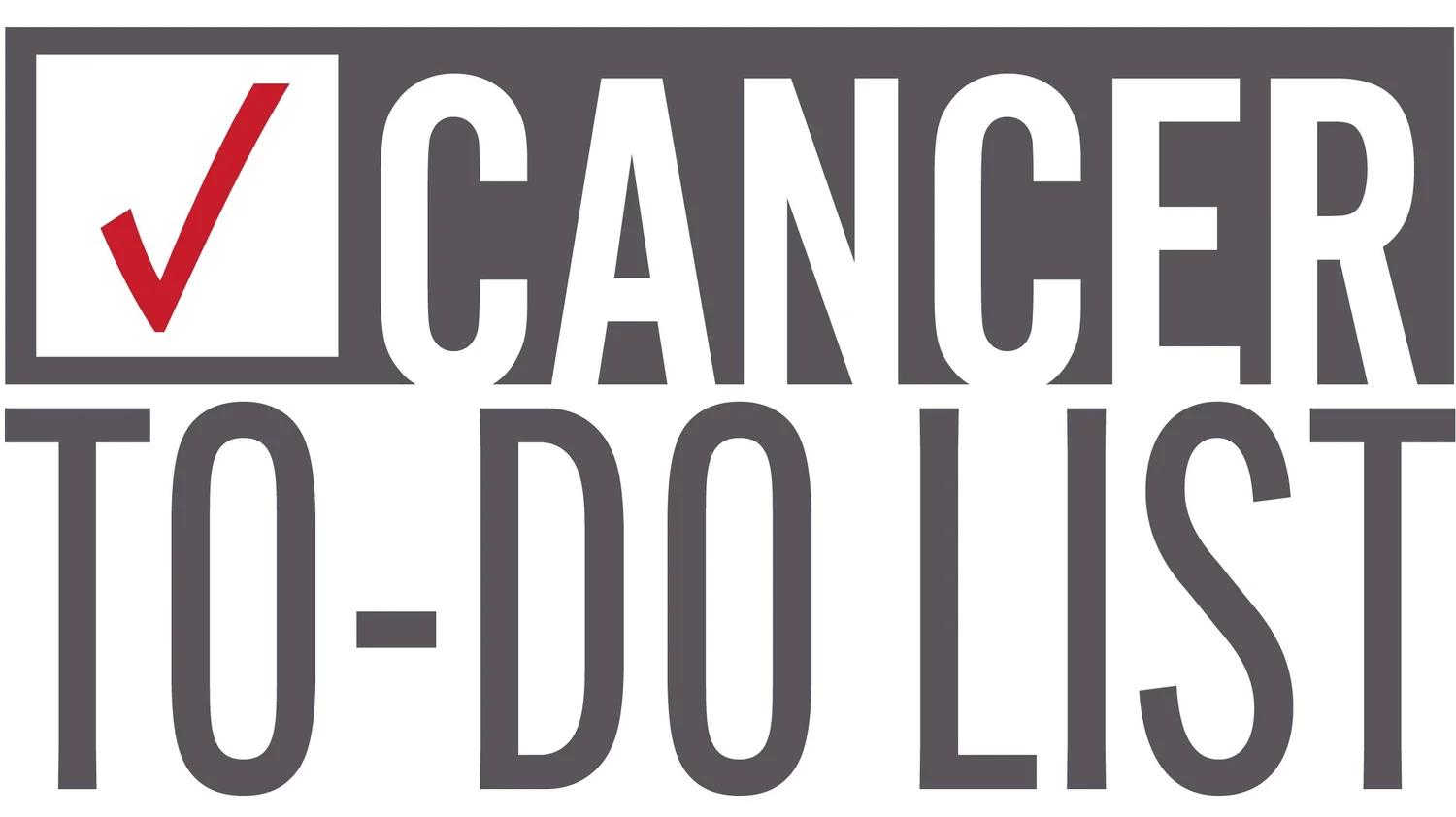Welcome
CANCER WASN’T ON MY TO-DO LIST
Hello! My name is Julie Herbst.
In 2017, my world was turned upside down when Joel was diagnosed with colon cancer. Two years later, I was diagnosed with breast cancer.
I am a busy, working mom with a long to-do list to tackle each day. Overnight, cancer topped that list. As time passed, I created the Cancer To-Do List using everything I’ve learned as a cancer caregiver-turned-patient. I’m sharing the information on this site in hopes of making your journey easier.
Julie’s Diagnosis
Breast Cancer, 2019
In 2019, life appeared to be back on its way to normal again after Joel’s diagnosis and year-long treatments, when I was suddenly diagnosed with breast cancer. I felt a lump in my left breast, and after a mammogram and diagnostic ultrasound they highly suspected cancer. How could this be cancer? I had received a clean report on my annual mammogram just ten months prior to my diagnosis. My first thoughts were of my children and Joel. Our kids had already been through so much; how was I going to tell them that I also had cancer? And Joel was still working to regain his own health. I didn't want to add any more of a burden to his shoulders.
The biopsy showed no cancer, but the surgeon didn't believe it. He said the findings were discordant. He insisted on a lumpectomy surgery to remove the tumor. I honestly didn't think there could be any way I had cancer. So I had the lumpectomy.
Surprisingly, the surgeon was right. An invasive ductal carcinoma (IDC) in my left breast began growing in a milk duct but then grew through the tissue to the outside of the breast. It was also called pT1c.
I decided to have a double mastectomy based on the aggressive nature of the tumor and the fact that the cancer was already invading the surrounding area; but I opted not to have reconstruction at the time. (However, four years later I changed my mind and had reconstructive surgery. Looking back, I wish I had done reconstruction initially.)
The double mastectomy took place just one month after the lumpectomy. The day before my surgery, I went to the cancer center to have a radioactive tracer dye shot into the nipple of my left breast so the surgeon could perform a Sentinel Node Biopsy (SLN) during the surgery. It was not as bad as it sounds! This allowed my surgeon to easily locate the sentinel nodes (the first axillary lymph nodes to absorb the dye) during the surgery. After he removed the first sentinel lymph nodes, the initial biopsy done during the surgery indicated that cancer had not spread to either of those lymph nodes. We later found out that was not the case. Several days after the surgery, pathology showed that the cancer had spread to one of the two lymph nodes removed. Because I didn't have a full axillary lymph node dissection, I was faced with not really knowing if or how far the cancer had spread. I decided against doing a second surgery to remove more lymph nodes. I'm so glad because I have learned that having lymph nodes is so much better for the immune system and reduces risk of lymphedema. Because of this later finding, the breast cancer was never properly staged. Hopefully, there was only one positive lymph node, which would make it stage 2. I have a 20% chance that there was further cancer spread. I remember the radiation oncologist asking me if I could live with that, and I said, “YES!” My answer was based on the fact that I am fully committed to doing everything I can to move toward optimal health, as well as trusting the Lord to heal my body.
The radiologist called it a "Category 5", which meant there was a 97% chance of cancer. (See image from the report below)
Shortly following my double mastectomy, I had a PET scan, which showed an area of concern in my pelvis. During that same time, I was getting second opinions and hearing concerning things like, "Sometimes cancer is like a baseball in a bush; but, Julie, your cancer is like a bush in a bush." I was also completely shocked when genetic testing revealed that I possessed a cancer-causing gene. I was the first one to learn that our family carried this gene. Read “Cancer Gene Shocker” for more information.
Because I had a hormone-driven cancer, all of the oncologists were strongly recommending at least an oophorectomy (removal of ovaries), which would force me into menopause and stop the estrogen flow as well as remove the risk of an ovarian cancer diagnosis down the road due to the gene. My whole team of oncologists and doctors felt that a total hysterectomy (removal of the entire uterus and cervix) as well as removing the ovaries would be the best decision. I underwent a total hysterectomy including removal of my ovaries in January of 2020, just two months after my lumpectomy and double mastectomy.
After all we had been through with Joel, I should have learned to take my time before jumping into three major surgeries in a row. At the very least, I should have slowed down and allowed my body to heal in between. I honestly didn't think I had cancer, which caused me to move forward with the lumpectomy. I had a hard time believing that someone as healthy as I am could have cancer. When the lump turned out to be cancer, I wasn't thinking straight. I moved forward with more surgeries because I was distraught that Joel and I both had cancer. All I could think about was surviving for our kids. Looking back, I wish I had taken time to pause and think.
As I mentioned before, I was much more inclined to pursue CAM (complementary and alternative medicine) treatments. I decided against chemotherapy and radiation, but my decision to take the recommended hormone therapy (endocrine therapy) was the most difficult choice on my journey. See more about this decision below.
I committed to a wide range of holistic therapies — everything from mistletoe therapy to high-dose IV vitamin C. I wanted to get to the root of why cancer was able to grow inside my body.
As much as Joel's diagnosis devastated me, my own diagnosis shook me to my core because I have dedicated my life to teaching health and nutrition. Healthy living was a huge part of my identity, and to receive a cancer diagnosis when I have worked to be so healthy shattered me. As a self-proclaimed, recovering perfectionist, I combed through my life, searching for the source of my cancer. I felt that if I could weed it out, then I could protect my family from anything like this ever happening again. I found many areas where I could live more naturally and holistically. But ultimately, God showed me that my life was so much more fulfilling when I released control and allowed Him to handle the details. I will never know the exact cause of my cancer (or Joel's cancer), but we have chosen to live as healthily as possible and leave the rest in God's capable hands. Read “What We Think Caused Cancer” for more information.
I hope our experiences can help you. Visit About Cancer To-Do List to read the backstory behind this website.
I studied this poster in my surgeon’s office with disbelief.
-

Joel and I in Austin, TX the day after my biopsy. The surgeon called to inform us that the biopsy showed no cancer, but he didn’t believe it. He scheduled me for surgery when we got home.
-
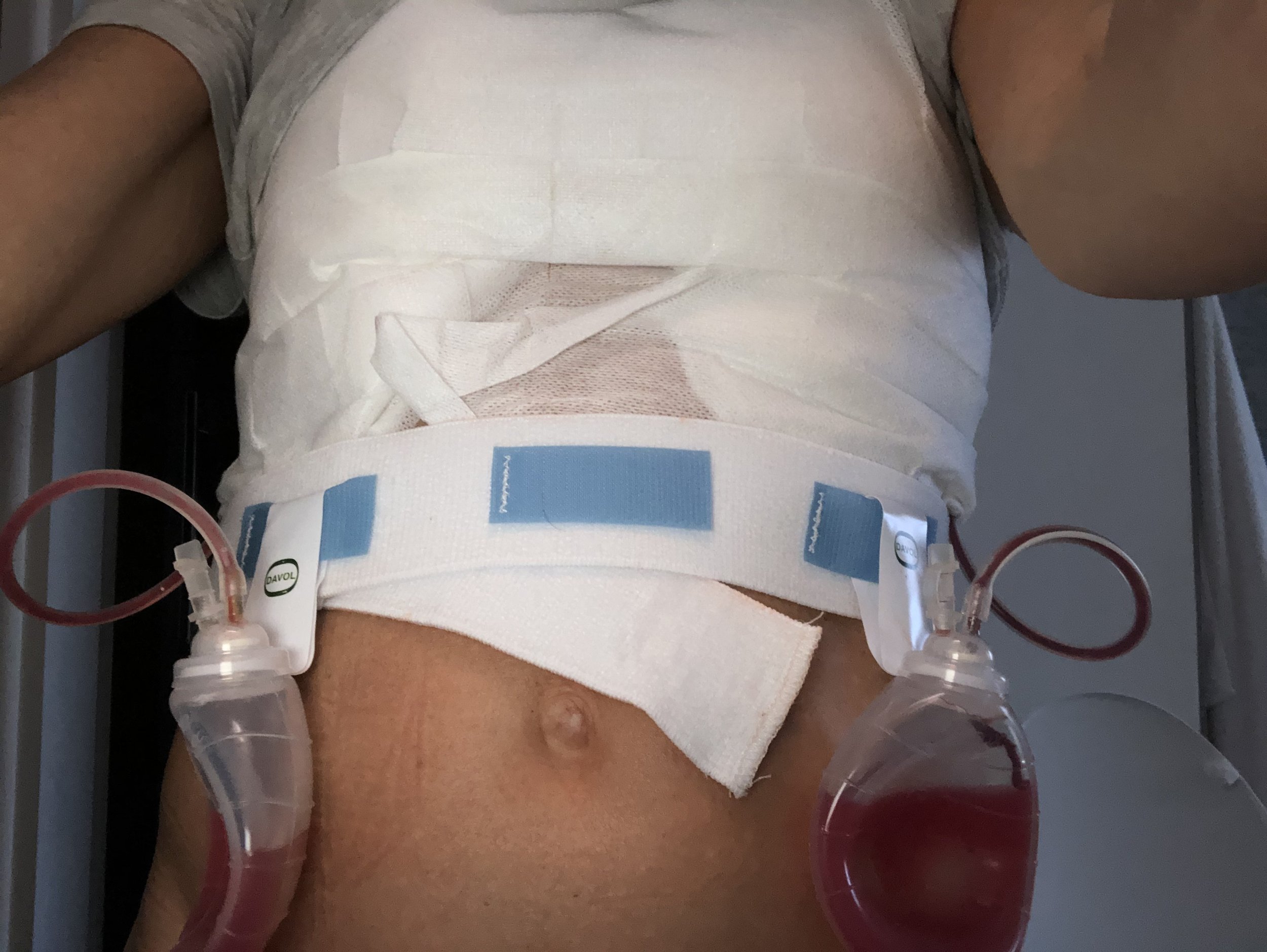
After my double mastectomy surgery, I came home with drains that had to be emptied several times a day. Joel had to chart the amount of liquid for the surgeon. I appreciated him caring for me!
-

I still can't believe I'm checking the breast cancer box on medical forms. I used to see that box and think of people I knew who dealt with cancer. I am grateful to the Lord for healing each time I check the box.
JULIE’S Treatment Decisions
MY DECISION NOT TO DO CHEMOTHERAPY
My oncologist explained her chemotherapy protocol for my case — which included numerous drugs being administered intravenously for 12 weeks. The thought of facing chemotherapy would have been hard enough in and of itself, but having just been through what we had with Joel, it was just unimaginable for me. Still, I did my homework on what this would mean for me.
According to this study, 70% of women with early-stage breast cancer do not benefit from chemotherapy. Even if I was not early stage, other studies showed only a 2-3% benefit in survival for someone like me, who was pre-menopausal with node-positive disease. To me, that was not worth doing chemotherapy.
Since I fit into most of the categories below, I felt good with the decision not to do chemotherapy. The hard part of the decision was that I had a fast-growing and poorly differentiated tumor, grade 3, with lymphovascular and perineural invasion; which meant the tumor had vascularity, or blood vessel involvement. One of my doctors called it an "angry" tumor. I had to consider these things when making my decision.
I studied my surgical pathology report carefully to understand the cancer before moving forward with any decisions.
MY surgical PATHOLOGY REPORT
I was diagnosed with IDC (invasive ductal carcinoma), which is a cancer that began growing in a milk duct and invaded the fibrous or fatty tissue of the breast outside of the duct. IDC is the most common form of breast cancer, representing 80% of all breast cancers.
The tumor was Nottingham Grade 3. Grade 3 (poorly differentiated) has a worse prognosis and means that the cancer cells look very different from normal cells. They grow and spread quickly in disorganized, irregular patterns. One oncologist explained it this way, "Sometimes cancer is like a baseball in a bush; but, Julie, your cancer is like a bush in a bush." I was also completely shocked when genetic testing revealed I possessed a gene that causes breast and ovarian cancer. I was the first one to learn that our family carried this gene. Read “Cancer Gene Shocker” for more.
The tumor was just under two centimeters.
I was positive for ALI (angiolymphatic invasion), which means that the cancer was found in the blood and lymph vessels. The lymph vessels in the breast are connected to the body’s entire lymphatic system. When the cancer spreads to the lymph and vascular system, it is called LVI (lymphovascular invasion).
I was positive for PNI (peripheral invasion), which means that the cancer invaded the surrounding nerves.
The Ki-67 was 20%. Ki-67 is a special stain that gives a sense of the aggressiveness of a tumor. A result of less than 6% is considered low, 6-10% intermediate, and more than 10% is considered high.
The tumor was 90% estrogen (ER) positive and 90% progesterone (PR) positive. (See “My Hormone Therapy Indecision” below to learn more.)
ER-positive (ER+) tumors have estrogen receptors. 90% of cells stained positive.
PR-positive (PR+) tumors have progesterone receptors. 90% of cells stained positive.
Hormone-positive breast cancers can be treated with hormone therapy drugs that lower or block estrogen receptors. My surgical report stated, “Hormone receptor-positive cancers tend to have a better outlook in the short-term, but these cancers can sometimes come back many years after treatment.”
The tumor was HER2 IHC negative. IHC (Immunohistochemistry) measures the amount of HER2 protein present. HER2 is a protein called human epidermal growth factor receptor 2 (HER2) that helps breast cancer cells grow quickly.
The pathology (p) staging was pT1c, NX. T1c is a tumor (T) that is more than one centimeter (1c), but no more than two centimeters. NX means that the lymph nodes (N) were not yet evaluated (X). For more information on breast cancer staging, visit cancer.org.
The margins were not clean, so a further surgery was encouraged to explore lymph node involvement.
Here are the early-stage breast cancer identifiers that helped confirm my decision to decline chemotherapy:
Tumors between one and five centimeters - mine was under 2 cm (centimeters).
No cancer in the lymph nodes - I had one positive lymph node out of two removed (this was the issue in not knowing the extent of spread. They thought that both of the lymph nodes removed were negative, but unfortunately one came back positive.)
Estrogen receptor-positive cancer - mine was 90% ER and 90% PR.
HER-2 protein negative cancer - I did not have HER2-positive cancer.
Oncotype DX and MammaPrint are genomic tests done specifically on a group of genes in a cancerous tumor to determine a patient's treatment recommendation. I had both of these tests done.
Oncotype DX Breast Cancer Assay test score between 11-25 - my score was 18 so my oncologist ran another test called MammaPrint.
MammaPrint test - my score was favorable. This result was good news! It meant that my body terrain was favorable for not having a recurrence or metastasis.
Before making this all-important decision, I sought second opinions from both Miami Cancer Institute and Memorial Sloan Kettering as well as a second local oncologist. Read “Second Opinions” for more.
The Miami Cancer oncologist strongly encouraged at least radiation and the hormone drug for me since I was ruling out chemo.
The Sloan Kettering second opinion was during Covid. I was able to get a second opinion virtually, but the appointment took longer than usual to schedule. As time elapsed and I was waiting for my virtual appointment, I was coming to a firm conclusion about not doing chemotherapy. During the appointment, the oncologist strongly advised that I do chemotherapy, radiation, and take the hormone drug. I had already made a decision in my heart not to do chemotherapy, but their strong recommendation definitely made me think carefully through my radiation and hormone drug decisions.
Another local oncologist in my home town said that he was concerned about me not doing chemo, radiation, and hormone therapy because I was pre-menopausal before cancer and my Ki67 was more than 20%.
What all of my research on chemotherapy as an option did was make my motivation to live healthier and get my stress under control even greater. I am so confident in the decision I made and the progress I have made. That ended up being my best treatment.
MY DECISION NOT TO DO RADIATION
Although radiation was recommended for me, I chose not to do it. I came to that conclusion based on my own research and from what I learned about the possible side effects. I didn’t make this decision lightly.
I studied my surgical pathology report once again to understand the cancer before moving forward with any decisions. See the surgical pathology report section above.
My RADIATION ONCOLOGIST
I had come to know and trust Joel’s radiation oncologist, so I was able to request a change from the radiation oncologist assigned to me, and work with him instead. I saw him three times in order to ask more and more questions before making the decision about whether or not to do radiation.
He explained that radiation was a good option for me, even though I had a double mastectomy. This was true in my case because there might still be cancer in my remaining lymph nodes. During my surgery, the surgeon removed the first sentinel lymph nodes, and the initial biopsy indicated that cancer had not spread to either of those lymph nodes. Several days later, pathology showed that the cancer had spread to one of the two lymph nodes removed. Because I didn't have a full axillary lymph node dissection, I was faced with not really knowing if or how far the cancer had spread. I decided against doing a second surgery to remove more lymph nodes.
The radiation oncologist actually thought another surgery to remove more of my lymph nodes was possibly a good idea, and he strongly encouraged us to get a second opinion on this. Every appointment was like that for us. We took the information doctors provided us, researched it thoroughly, and always sought another opinion. It was tiring, but worth it.
He confirmed my long list of concerns about possible side effects: secondary skin cancer, blistering and peeling, increased inflammation, damage to the mitochondria, lung and heart disease (short and long-term), pneumonia or a cough that would require steroids for many months, and even death.
The tumor was on my left side, and studies show that the radiation risks could be even greater in cases with left breast cancer. The effects were often long-lasting, even up to ten years after diagnosis. https://pubmed.ncbi.nlm.nih.gov/23484825/ https://ascopubs.org/doi/10.1200/JCO.2005.05.1037 https://ascopubs.org/doi/pdf/10.1200/JCO.2006.09.6420 https://erj.ersjournals.com/content/23/1/9
What is even more concerning is the small risk of developing a second malignancy, called angiosarcoma, in the breast following radiation. https://pubmed.ncbi.nlm.nih.gov/14528072/
None of that sounded worth it to me, especially because my focus was to get my body in the best possible health so cancer could never grow again.
On my final visit, my radiation oncologist reviewed the side effects once more with me, and we filled out scenarios specific to my case on a tool that both MD Anderson and Sloan Kettering have online, called the Breast Cancer Nomogram. The software calculates the probability of finding additional positive lymph nodes in breast cancer patients like me.
MD ANDERSON PREDICTOR
http://www3.mdanderson.org/app/medcalc/bc_nomogram2/index.cfm?pagename=nsln
MEMORIAL SLOAN KETTERING PREDICTOR
http://nomograms.mskcc.org/breast/BreastAdditionalNonSLNMetastasesPage.aspx
The scenarios helped us get an idea of my chances of recurrence, which totaled about 20%. If I did radiation, it would reduce my chance of recurrence to 5%. The two reasons this radiation decision was so difficult were because of my unknown lymph node situation and because I knew I wasn’t willing to take the hormone blocker drug long term. I ended up taking only one drug, called Letrozole, every other day for nine months, and then I stopped. Mentally, it wasn’t the right thing for me.
One thing that continued to bother me, besides all of the scary side effects, was that although radiation can kill some cancer cells, it does not kill all. I sat quietly thinking through everything.
Then the doctor looked at me and said, “It’s up to you. Can you live with a 20% chance of recurrence?”
Without hesitation, my response was, “Yes. Especially because I am fully committed to taking great care of myself with diet, hydration, exercise, de-stressing and sleep.”
He accepted my answer without any argument.
It was definitely a risk for me not to do radiation, but I felt in my heart the risks of doing it would be greater. I often think about my decision and what the lasting side effects would have been had I chosen to do radiation. Because I don’t have to deal with the aftermath on a day to day basis, it makes me extremely thankful that I chose to heal the terrain of my body.
MY HORMONE THERAPY “INDECISION”
Many forms of cancer, particularly breast cancer, are hormone driven. When breast cancer is discovered, the breast tumor is tested for two proteins, called hormone receptors. These receptors are: estrogen (ER) and progesterone (PR). The cancer will be identified as either estrogen receptor (ER) and/or progesterone receptor (PR) positive or negative. A cancer that is found to be positive for these proteins is called hormone-receptor-positive breast cancer. This means that the cancer can be fueled by estrogen and/or progesterone hormones.
Because my tumor was ER+ and PR+, a long-term hormone therapy (5-10 years) was recommended as treatment with a drug that blocks hormone production like tamoxifen, letrozole, or another aromatase inhibitor. Tamoxifen can be used whether a woman is premenopausal or postmenopausal. But only postmenopausal women can take an aromatase inhibitor (called AIs), which is a class of drugs like tamoxifen. AIs work by stopping a key enzyme (called aromatase) from changing other hormones into estrogen. The idea is that if your body is no longer making estrogen then it “starves” the cancer, stopping or slowing the growth. This growth can be in the original breast cancer or in any cells that escaped to other organs in the body such as bone, liver, lung, etc. The most common AIs are letrozole (Femara), anastrozole (Arimidex), and exemestane (Aromasin). Women with metastatic breast cancer are encouraged to take different hormone therapy drugs.
Whether or not to take a hormone blocker (endocrine therapy) was definitely the hardest decision on my cancer journey.
In between my surgeries, I had a PET scan, which showed an area of concern in my pelvis. After meeting with a gynecological oncology surgeon, he confirmed that there was a large cyst in my cervix. He suggested doing a total hysterectomy as soon as possible.
All of the oncologists were strongly recommending at least an oophorectomy (removal of ovaries), which would force me into menopause and stop the estrogen flow, as well as remove the risk of an ovarian cancer diagnosis down the road due to the gene. In addition to the oophorectomy they were emphatic that I needed to take the hormone blocking drug. The following information corroborated what the doctors said. A 2011 study found a 50% increase in overall survival for ER+ breast cancer patients who had an oopherectomy and took the hormone drug. https://pubmed.ncbi.nlm.nih.gov/18086800/
The whole team of oncologists and doctors felt that a total hysterectomy would be a good decision. I underwent a total hysterectomy in January of 2020, just two months after my lumpectomy and double mastectomy. Not only did the pathology come back clean, but the mass was completely gone. No cancer was found in my cervix.
My oncologist said that if I was not going to do chemotherapy or radiation, I had to take the hormone drug (letrozole) probably for ten years. She said, "Julie, you had an aggressive tumor. If you don't take the hormone drug and the cancer returns, I cannot save you. Especially since you are not doing chemotherapy or radiation." I got opinions from other doctors and oncologists, and they were all the same — take the hormone blocker, or you greatly increase your risk of recurrence, metastasis, or death.
This made the decision very difficult. The other factor complicating the decision was that Joel also had cancer. Otherwise, I think it would have been easier to say no. I just knew I didn't want to make a foolish decision. I picked up the recommended hormone drug at the pharmacy and carried it around in my purse. I just couldn't imagine taking it. I had read the pharmacy pamphlet describing the side effects: bone and joint pain, faster aging, carpel tunnel, trigger finger, hair thinning, osteoporosis, hot flashes, fatigue, depression, vaginal dryness, pain during sex, difficulty sleeping, and the list goes on. It sat in my purse for three months as I continued to agonize over the decision.
I wanted to regulate my hormones naturally, and I felt like this drug would prevent me from getting my body into optimal health. I am the kind of person who will make the changes necessary to get to the root problem. In this case, it was reducing excess estrogen in my body. For some reason, I had a high level of hormones circulating in my body. I don't know if this high level was due to the fact that I hadn't reached menopause yet, or if my body wasn't getting rid of excess estrogen effectively, so it was recirculating in my body. I started researching and learning how to rid my body of excess hormones and how to achieve hormonal balance.
I made an appointment to see a holistic MD who was very well known in the cancer community. I just wanted him to tell me it was okay for me not to take the drug. After reviewing my records, he told me to get the hormone drug out of my purse and take it immediately. So I did. I reluctantly took the drug every other day for nine months, and then I discontinued. I stopped, but not because I was having terrible side effects (which is often the reason people stop). Instead, I hated the idea that this hormone blocker kept my body from getting the proper amount of estrogen every day. I knew it wasn’t natural. I was doing everything I could to work toward optimal health, and I was already well on my way on the hormonal-balance journey. It was a hard decision to stop, but mentally it was the right one for me.
At every follow-up appointment, my oncologist reminds me that I am foolishly risking my life with the decision not to take the drug. I’m thankful she still monitors me, even though I go against her recommendations. I am fine with her scolding me, and she is fine with me sharing all of the holistic things I am doing. She seems intrigued, but not overly excited.
I know I am taking a risk, but I am more determined than ever to teach my body to maintain proper hormone balance and get rid of the excess estrogens. See the Tests page to learn more about balancing hormones in natural ways.
Joel’s Diagnosis
Colon Cancer, 2017
In August of 2017, Joel began having bouts of intense stomach pain. He went to the doctor who then sent him for a CT scan. The diagnosis was diverticulitis.
Two months later, Joel once again had excruciating stomach pain and was rushed to the hospital. After a CT scan, the doctor said they were taking him in for emergency colon surgery. A few minutes later, the doctor returned, “We are going to slow down and re-evaluate Joel’s situation before jumping into surgery,” he determined. They diagnosed Joel with diverticulitis once again, but this time with a possible perforation in his colon with an abscess. After a week in the hospital, they sent Joel home with a pic line of strong, intravenous antibiotics for six weeks and scheduled him for a laparoscopic colon surgery to treat the diverticulitis.
The day finally arrived, but the surgery was taking much longer than expected. I will never forget the look on the surgeon's face as he walked down the hallway toward me on that November day. “I'm sorry, but Joel doesn’t have diverticulitis, he has cancer.” With those few words, our family's entire world was turned upside down.
An adenocarcinoma on Joel’s left side grew through the wall of his intestine and penetrated the abdominal wall. It was advanced, perforated colon cancer, also called pT4b. The cancer spread to just one of 12 lymph nodes, which was good news, but the concern was the perforation and invasion of the stomach lining. They told us the diagnosis carried a very poor prognosis. They never properly staged Joel, but we believe it was Stage IIIC.
Joel was determined to fight the cancer with every resource available to him. The initial steps he took in pursuit of healing involved two rounds of chemotherapy followed by radiation. Before beginning any treatment, we sought out multiple professional opinions from various cancer centers around the country. We were told by every doctor we consulted that without chemo and radiation, Joel would not survive; even then, the journey would be tough. When I asked an oncologist at MD Anderson Cancer Center his opinion about Joel foregoing chemotherapy, he said, “Joel’s case is so severe that I would chain Joel to a chair to do chemotherapy.” It was very difficult for me to wrap my head around the thought of Joel undergoing such harsh treatments, as I much preferred a more natural approach.
Joel was open to CAM (complementary and alternative medicine) treatments, but he felt strongly that he needed to pursue every available treatment option. At one point he told me, “We have to throw the entire kitchen sink at this! I will not be a good dad if I don't do it all.” As he began treatments, we continued to research non-conventional or CAM options as well.
After a long year of grueling treatments and several hospital visits, Joel's body was weary and worn, but we were beginning to feel some hope. His scans were looking good, although the tumor markers in his bloodwork continued to fluctuate. We watched those levels carefully, but we felt like we were getting a second chance at life as a family. That meant every bit of the fight had been worth it.
-
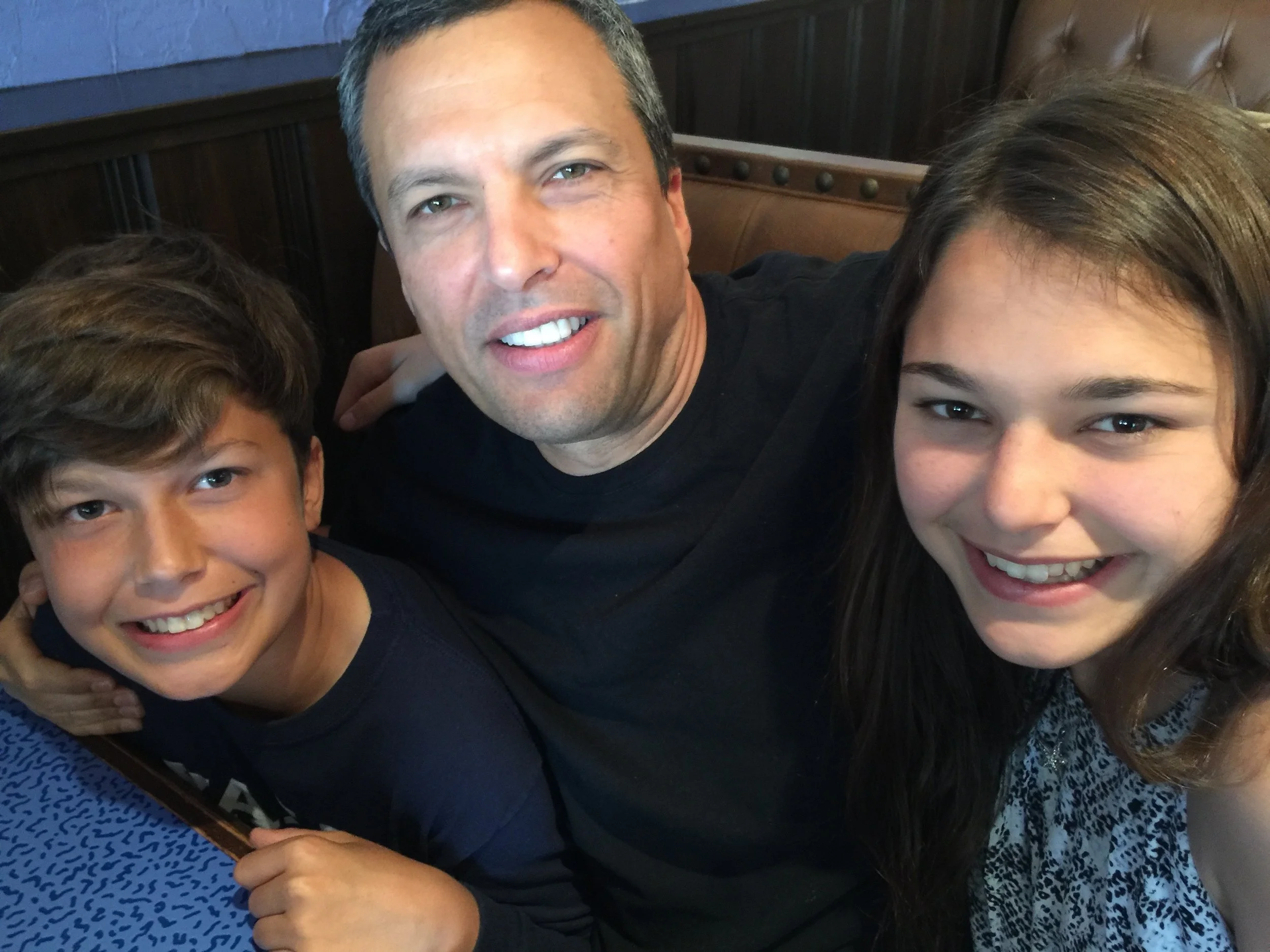
Celebrating Joel’s 50th birthday a few months before his shocking diagnosis. He had a family history of heart disease, but cancer was never on his radar.
-

We had so many touching moments on that first day. The outpouring of love we received from our children, family, and friends was amazing.
-

In between Joel’s first hospital stay and his surgery, our boat sank in a tropical storm. We stared at the boat under water in disbelief.
-

It was a beautiful winter day when Joel came home from the hospital after his surgery. He was smiling and ready to put a plan together to get well.
JOEL’S Treatment Decisions
JOEL’S CHEMOTHERAPY EXPERIENCE
Joel started chemotherapy just after Christmas in 2017. It was almost two months after major abdominal surgery. He had seven grueling months of IV (intravenous) infusions of 5-FU (fluorouracil) plus leucovorin. Every oncologist we consulted with explained that Joel’s situation of having a perforated colon cancer absolutely required this regimen in order to have a chance of survival. As one study reveals, pT4 colon cancers carry the worst prognosis. https://pubmed.ncbi.nlm.nih.gov/24347179/
This study shows that adjuvant (treatment that happens after surgery) postoperative treatment with 5-FU and leucovorin in curatively resected colon cancer significantly reduces the risk of cancer recurrences and improves survival. https://pubmed.ncbi.nlm.nih.gov/12598344/
Both of these studies explain why every oncologist recommended the same treatment for Joel.
Here are some experiences Joel had during treatment:
Joel was extremely ill during his treatments with nausea, insomnia, pain, and multiple side effects.
Joel started on medical cannabis, and it was a game-changer. His symptoms lessened to the point that we threw away multiple medications, and he used the cannabis instead.
Joel was hospitalized multiple times for bowel obstructions and other difficulties. Chemotherapy had to be stopped once because of a bowel obstruction.
Joel developed what looked like a water balloon on his lower back. An MRI revealed an area of inflammation, but fortunately no tumor. Chemotherapy had to pause during this time.
Joel’s CEA (carcinoembryonic antigen) tumor marker increased. One evening we received a call from the oncologist that he was immediately ordering a PET scan because Joel’s CEA jumped up. It was the first time we experienced the use of a tumor marker to monitor treatment progress. The PET scan revealed an area of concern at the base of his neck, so he had a brain scan. Fortunately, the brain scan was clear, so chemo resumed.
The roller coaster ride continued; after a second opinion at Sloan Kettering, Joel endured radiation and another round of chemotherapy.
Altogether, it was almost a year of treatment. Joel admitted later that had it not been for our family, he would have stopped after the first few chemo treatments.
JOEL'S RADIATION EXPERIENCE
Joel’s local oncologists were unsure of whether or not to recommend radiation when he was first diagnosed. Radiating the tumor bed (the tissue that previously surrounded a tumor before it was surgically removed) could be risky. Radiating Joel’s tumor bed meant radiating his bowel wall, which would create future cancer risk, more possible adhesions (in addition to those created during surgery), and greater chance of bowel blockages, which Joel had been experiencing.
Chemotherapy was the first focus, and it was a very difficult series of chemo treatments. Toward the end of chemotherapy, we began having discussions with Joel’s oncologist again about the possibility of radiation. We already had a second opinion from MD Anderson, which was a no. Even though they felt Joel needed radiation, they felt the risks outweighed the benefits. Joel’s local oncologists were undecided, so getting a third opinion from Memorial Sloan Kettering in New York was suggested. Read ”Second Opinions“ for more.
The doctor and medical team at Sloan Kettering thoroughly examined Joel, and the team felt initially that radiation was not necessary. The doctor went a step further and wanted to bring Joel’s case before an oncology committee the following week, just to be sure.
We arrived home and were so happy to be putting this cancer journey behind us. On an evening about two weeks later, Joel and I were sitting on the couch when my phone rang. It was the radiation oncologist from the medical team at Sloan Kettering. He had an alarming tone in his voice. He explained that the oncology board had closely examined Joel’s case and felt that radiation was absolutely necessary for his survival. They not only recommended radiation, but they wanted it to begin immediately. Alongside the radiation, they prescribed another round of chemotherapy (this time oral). We were stunned. It seemed unreal that this was happening. He encouraged us to fly back to Sloan and begin radiation right away. Joel asked if there was any way to do the radiation at our local cancer center, rather than go to New York for two months of treatment. What happened next was an amazing gift. He offered to discuss their radiation protocol with Joel’s local radiation oncologist the next morning. And that’s exactly what happened — two doctors comparing notes so Joel could do the treatment at home.
Joel began six weeks of radiation coupled with chemotherapy. We went Monday through Friday for six weeks. Joel had an advanced form of radiation therapy that allowed his oncologist to customize the radiation dose by modulating or varying the amount of radiation given to a specific area (the tumor bed) of Joel's abdomen. The radiation intensity was adjusted and the treatment was targeted. This allows the radiation to be aimed at a certain area — with more radiation delivered to the tumor cells and less directed at normal cells nearby. The amount of radiation was 50 Gray (Gy). Data indicates that postoperative radiation in Joel's kind of situation improves survival. https://pubmed.ncbi.nlm.nih.gov/8876884/
We were blessed to be able to bring the whole family with us when we visited New York City for a second opinion from Memorial Sloan Kettering.
On the last day, Joel rang the “hope bell” and everyone cheered, especially Joel. We walked out of the cancer center for what we hoped would be the last treatment.
Here is additional research Joel reviewed to make the decision to do radiation:
https://pubmed.ncbi.nlm.nih.gov/3943031/ https://pubmed.ncbi.nlm.nih.gov/16562650/ https://pubmed.ncbi.nlm.nih.gov/8556716/ https://pubmed.ncbi.nlm.nih.gov/8501497/ https://www.semanticscholar.org/paper/Adjuvant-continuous-infusion-5-FU%2C-whole-abdominal-Fabian-Giri/d998136ae49ef6a215b546498b6ed986d87afc73
On the last day, Joel rang the “hope bell” and everyone cheered, especially Joel.

It always does.
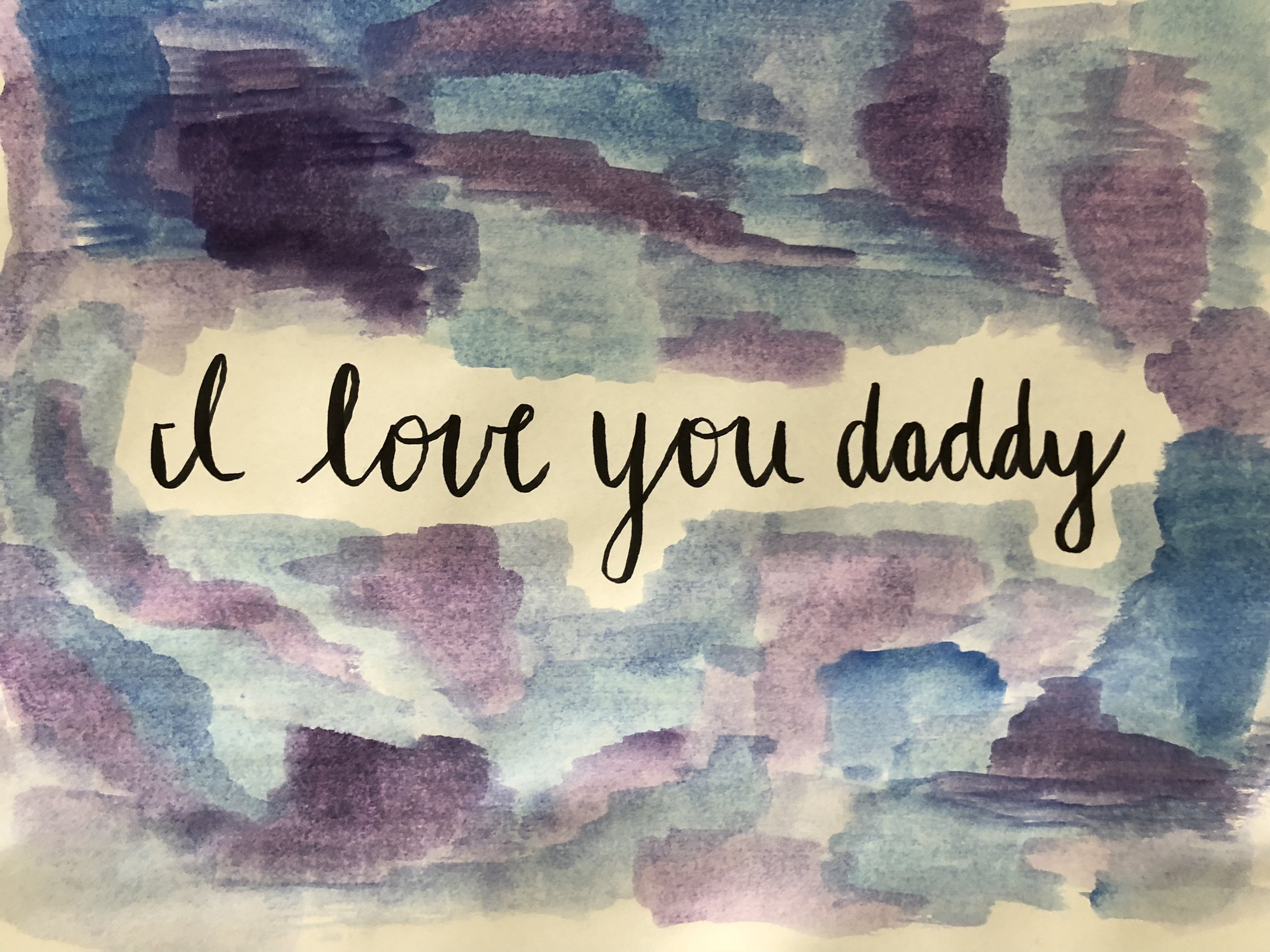
Hannah's gift to Joel after his surgery.
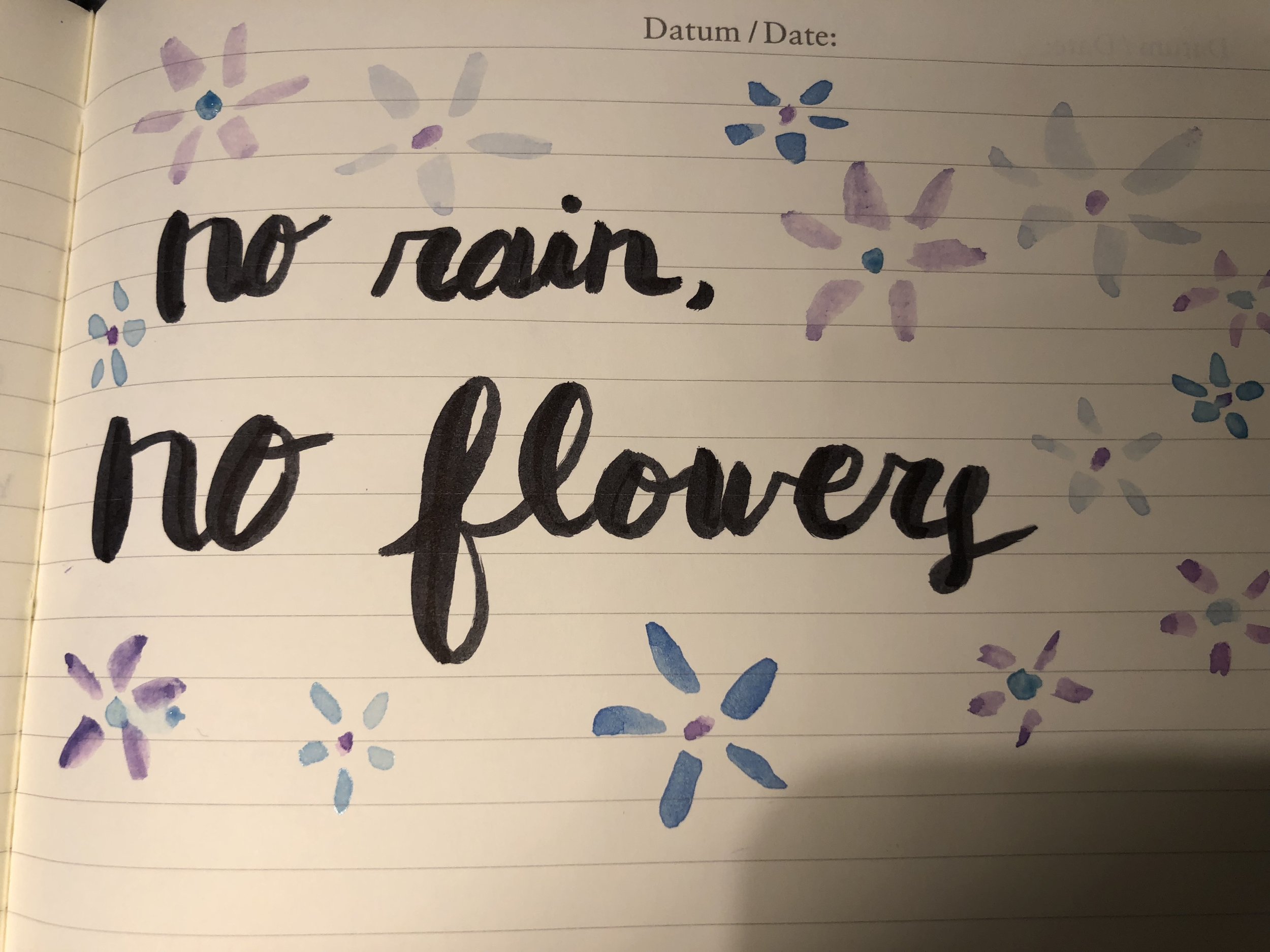
One of my favorite reminders from Hannah.
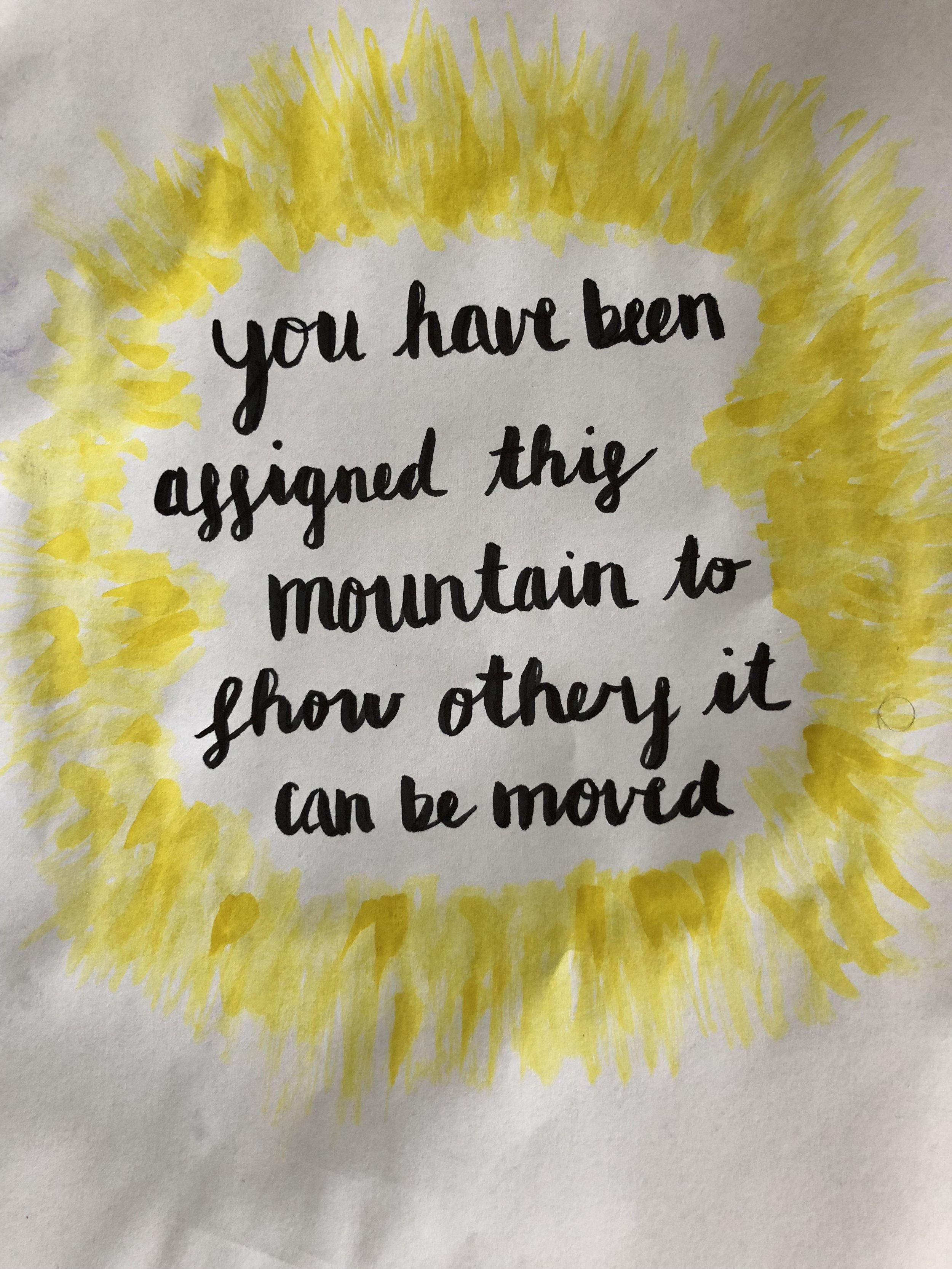
Hannah gave this to both of us.
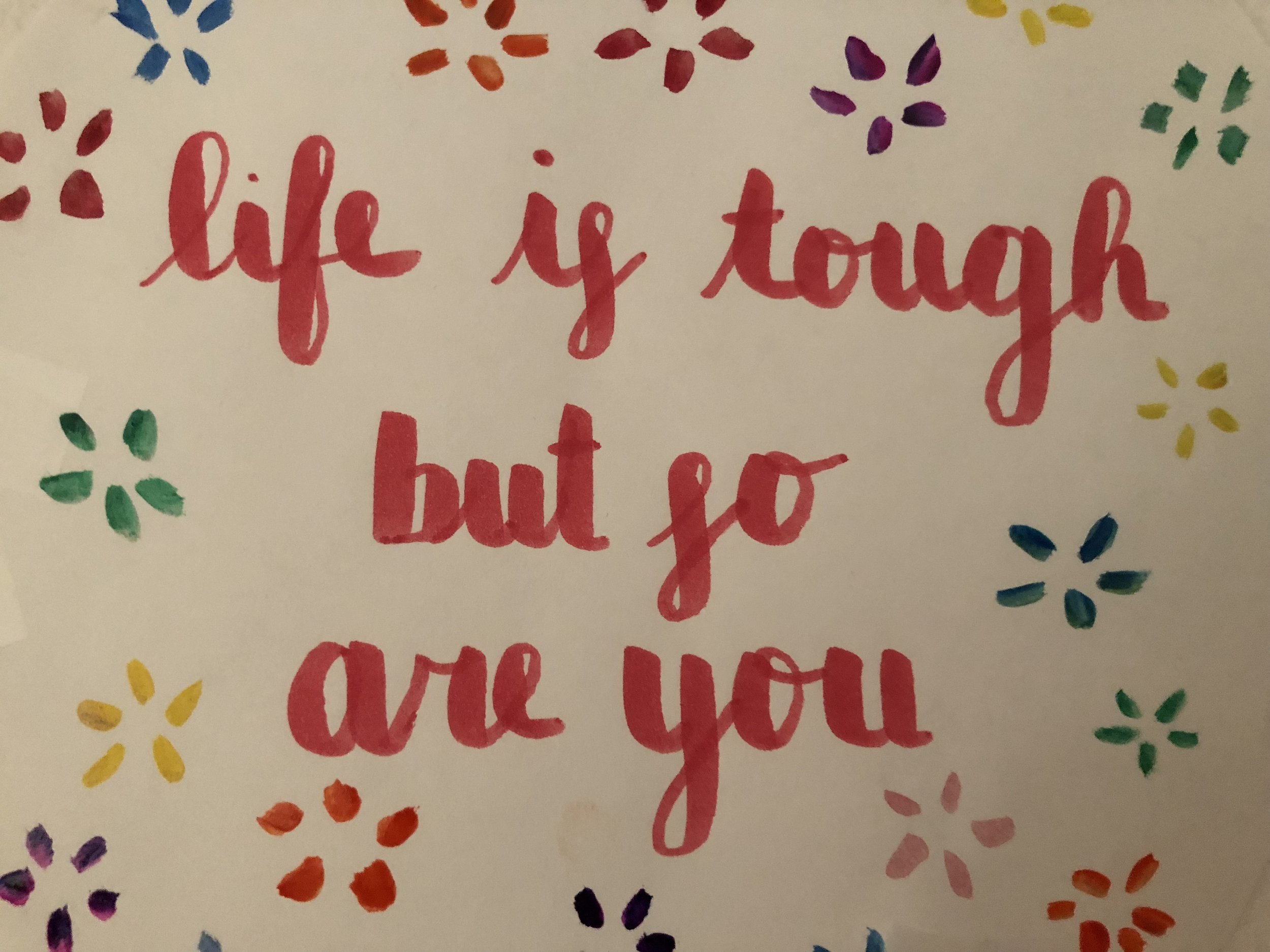
Hannah's gift to Joel during chemo.

Hannah's Christmas gift to me in 2019.
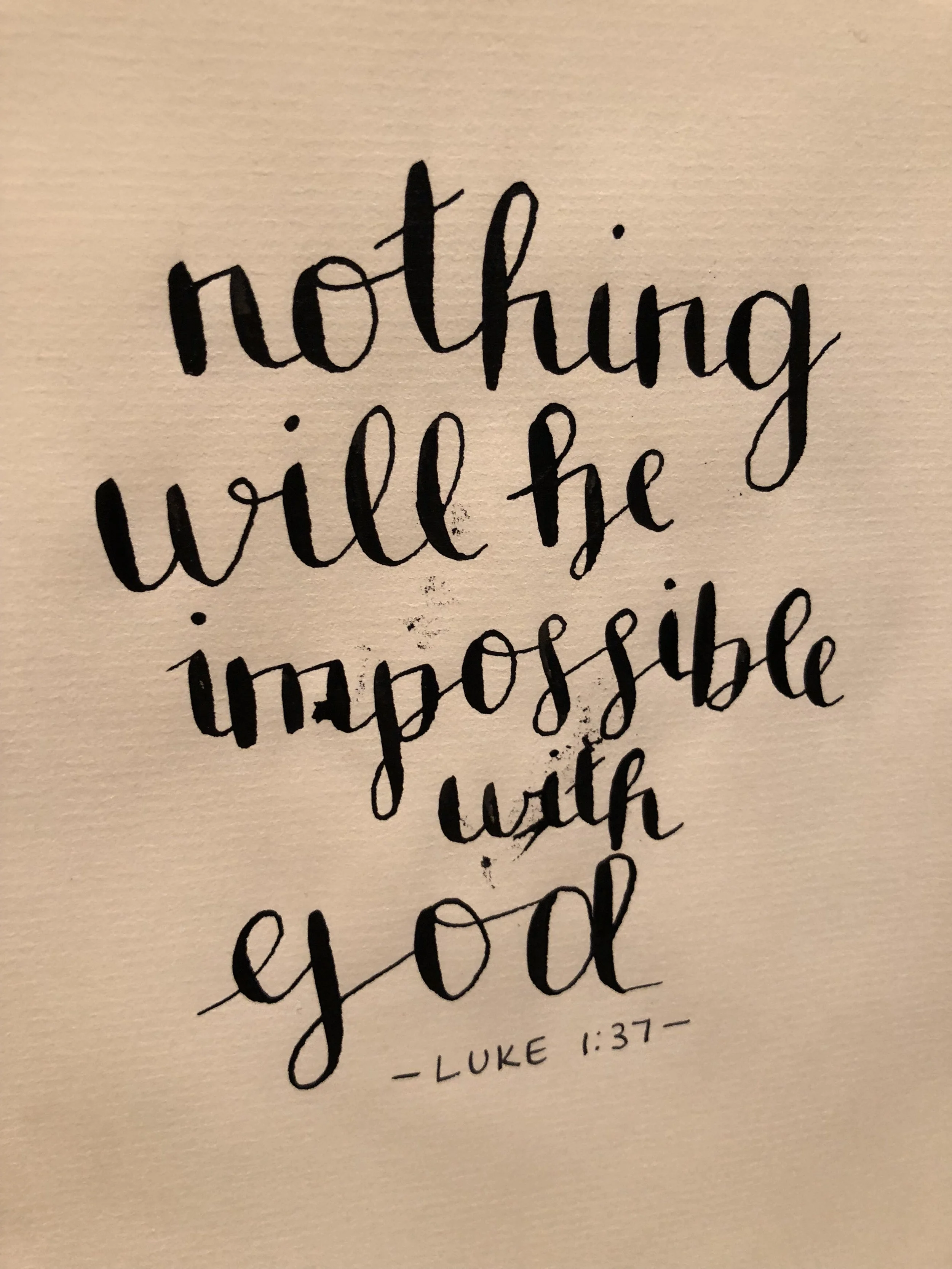
So true!
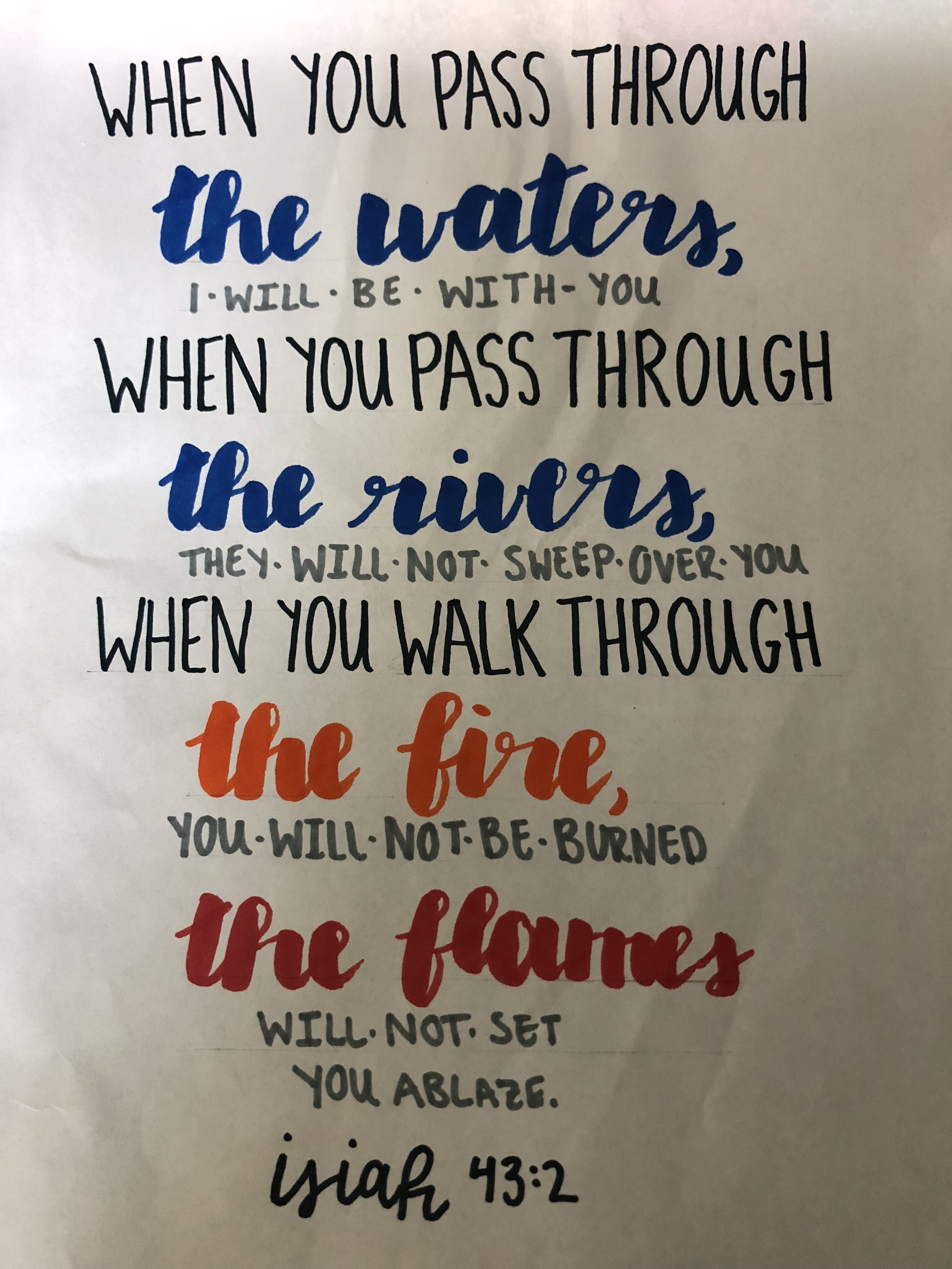
One of our favorite verses!

Hannah's pin board in her room is always a treasure box of encouragement.

Yes! Let's go!

Hannah gave this to Joel in the hospital.
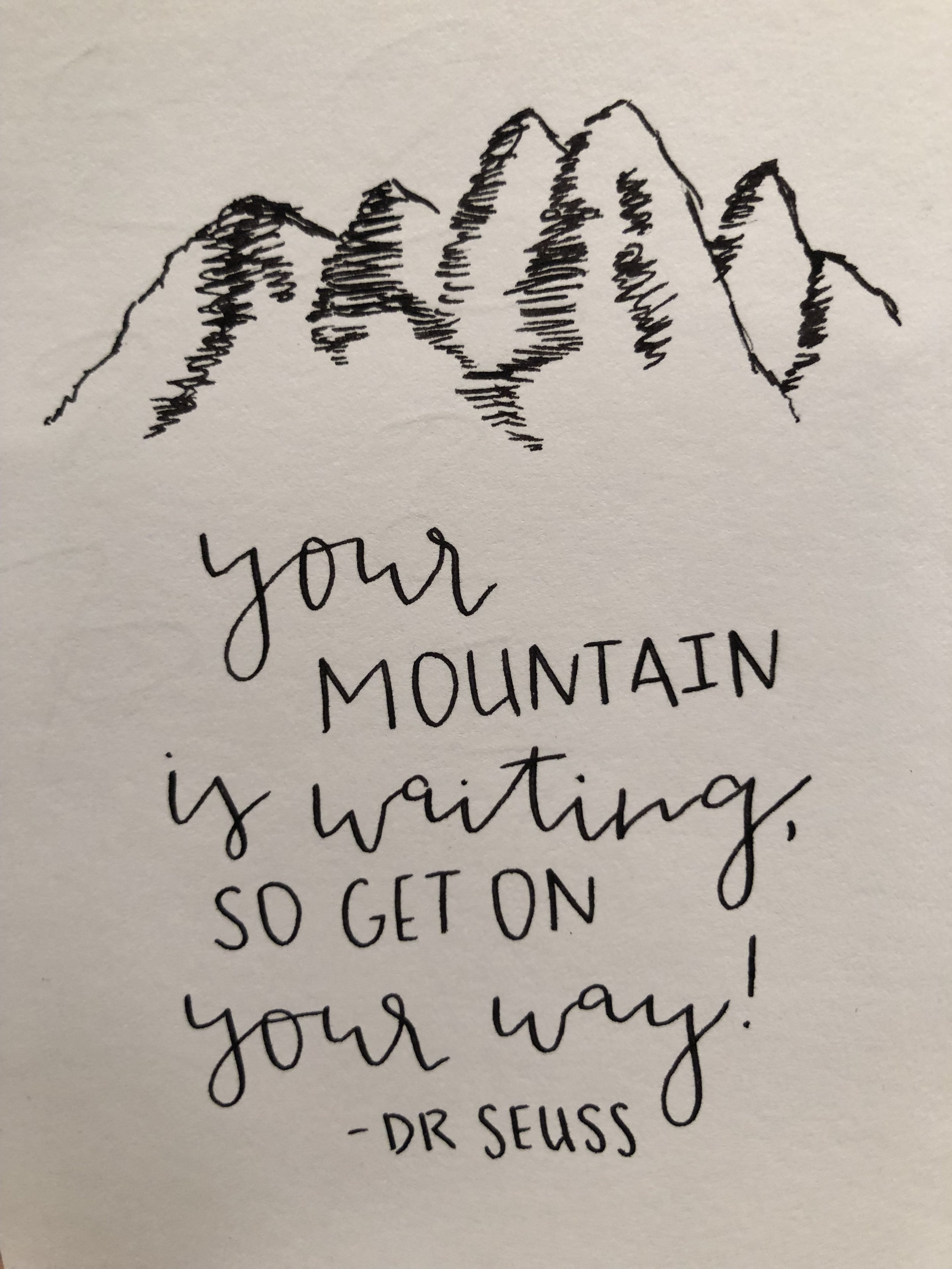
Encouragement in the valley.
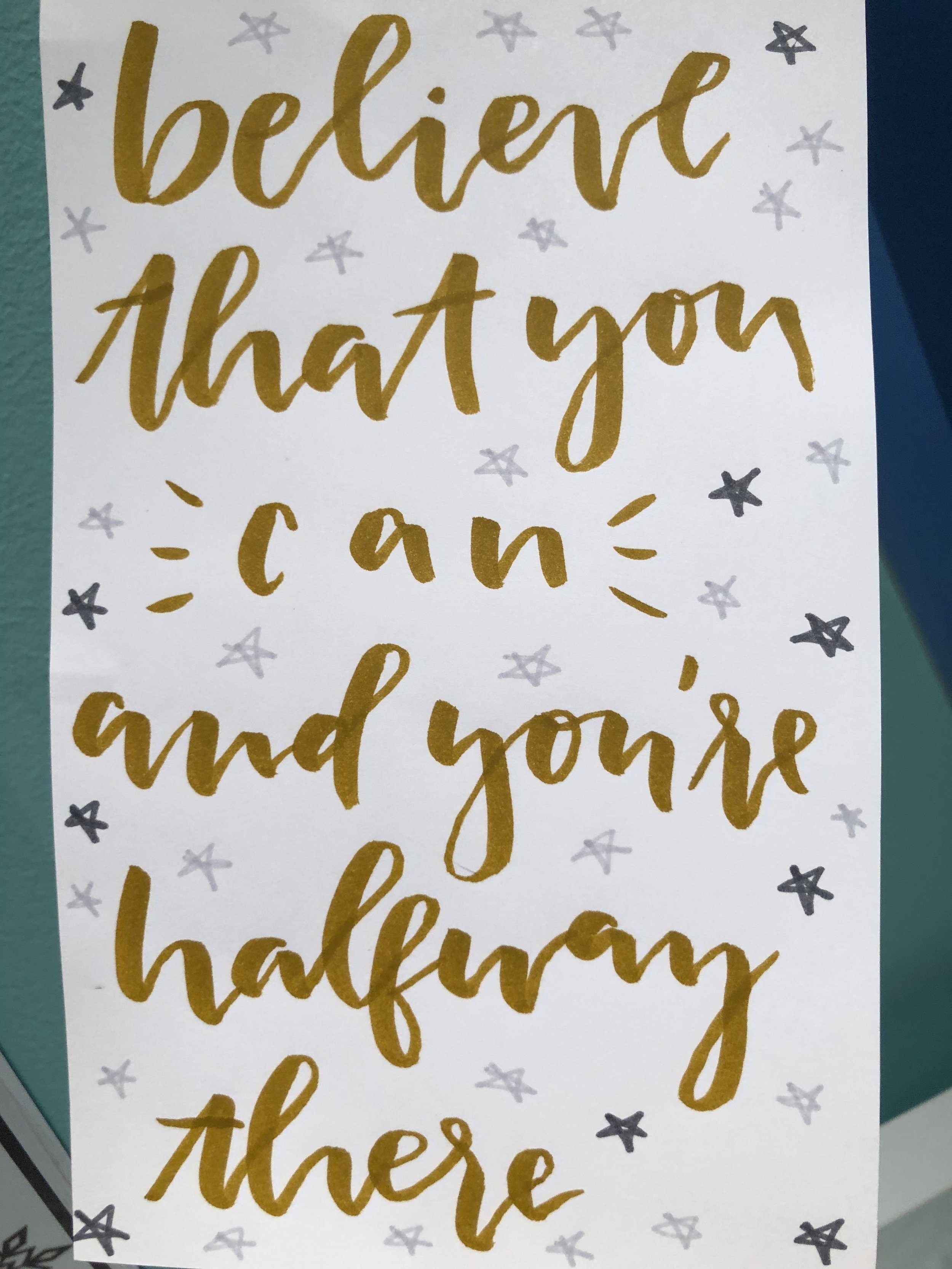
This is such an important reminder for any difficult journey!
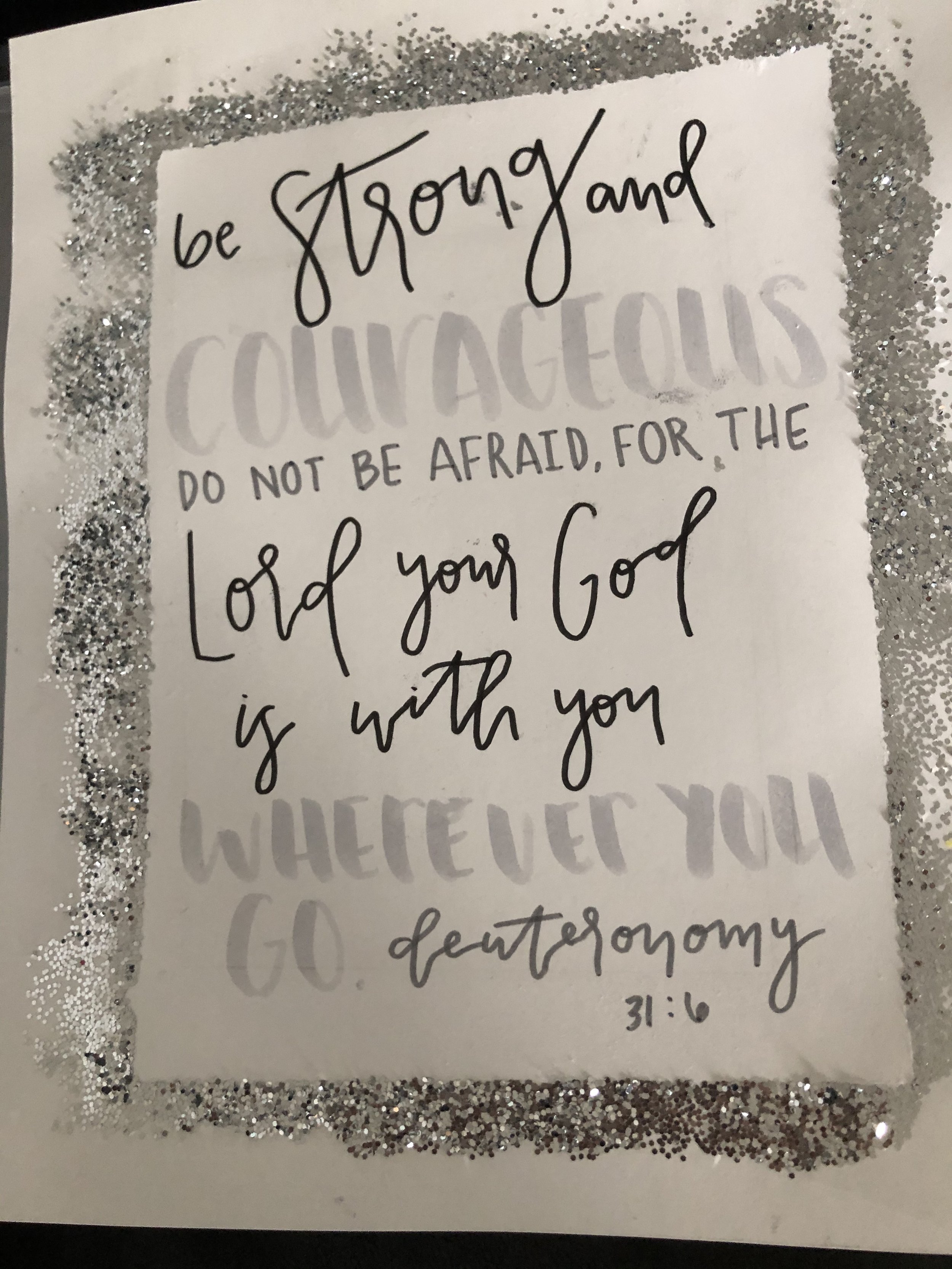
Hannah knew this verse was special to me.

I pictured the Lord as a lion by my side.

Max painted this for me and said, "Mom, do you see the sad face?"
